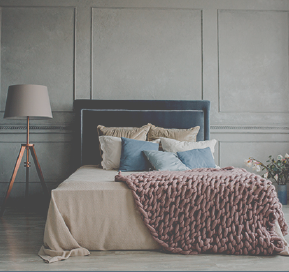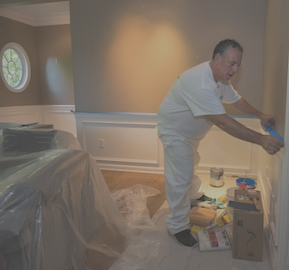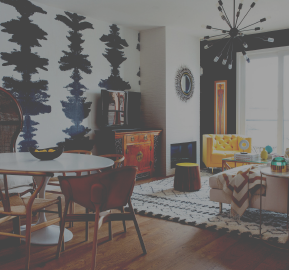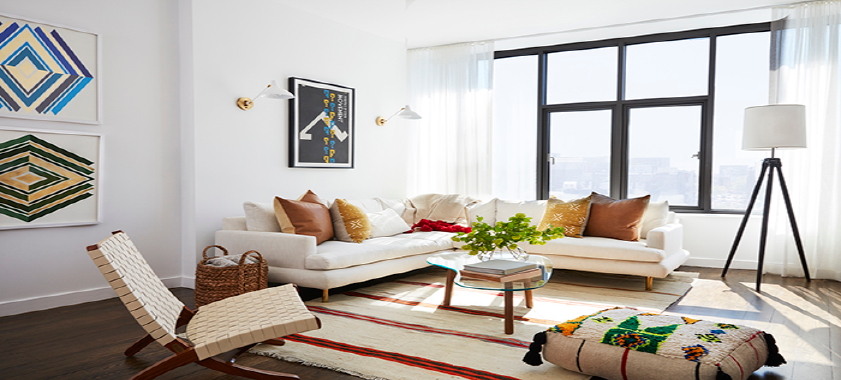Stucco Paint & Knowing How to Paint Over Stucco Cracks
Do I need special paint when painting stucco?
Painting stucco on exterior surfaces is potentially difficult due to its bumpy, uneven surface. Before painting stucco, make sure the surface is properly cured by waiting 60 days after the stucco is poured. It’s best to fill in any cracks in the wall before beginning.
Consider pressure washing the surface to remove any existing paint, as well as any dust or other detritus that’s on the surface of the wall. Take care to cover all surfaces you do not want to be painted, as usual.
Particularly rough-textured stucco will take extra paint, so be ready to buy more than you might usually estimate for this project. If the stucco has not been painted before, remember that its surface will soak up plenty of paint, so that you may need several layers.
Use a flat, no-gloss paint so that your stucco will look its best, and use a masonry primer to prep the surface. Start painting on a warm day with moderate humidity, and wait 24 hours before applying each successive coat. A muted color will typically have better coverage than a brighter one, with fewer applications.
Consider using a paint sprayer to ensure good coverage of your exterior. If you use a sprayer, make certain that all protective coverings are secure; paint sprayers operate have extremely high pressure and can easily remove these coverings.
You can also use the sprayer’s shield to protect these areas. Use an even pattern with the sprayer and spray with short bursts rather than long strokes to get good coverage. Try to paint the stucco in several directions.
If you don’t use a paint sprayer, paint rollers are the way to go. If your stucco is very rough, choose a roller with a large, soft nap to better get into the surface’s nooks and crannies. (It may be a good idea to go over the surface with a roller even if using a sprayer to ensure complete coverage.)
Smoother stucco will not need as large of a nap. You may want to buy several rollers for your project since stucco’s rough surface will damage rollers. Use several painting patterns for full coverage.
Ready to get started painting your stucco house?
How do I paint over cracks in stucco?
Before you repaint a badly cracked stucco surface, you need to repair the cracks to create a smooth surface for painting. Fortunately, repairing cracks in stucco is a relatively easy job, requiring just a few basic tools.
All you need to repair cracks in stucco is some high-quality caulk, a bucket of water, and an old sponge or rag. Latex caulk with a silicone base is a good choice, as it is very durable and long-lasting.
Begin by opening up the tube of caulk. This may involve cutting the top off the tube, in which case you want to make the hole as small as possible so that you can apply the caulk very precisely.
Press the tip of the caulk tube against one end of the crack and gently squeeze to push a bead of caulk into the gap. Keeping the squeezing pressure constant, move the tube slowly and steadily along the crack to fill it with caulk. Try to fill the crack as completely as you can. Don’t worry if some excess caulk spills out of the crack; you can clear it up later.
After applying the caulk, use your finger to press it into the crack, filling every tiny crevice. Next, submerge a sponge or rag into the bucket of water. Squeeze out the excess water and then wipe it over the wall to remove the caulk spilled out of the crack.
Let the caulk dry for at least a few hours. It might shrink a little as it dries, in which case you will need to apply additional caulk to fill in the gaps. After the second application, wait another few hours, or even until the next day, to ensure the caulk is completely dry. You are now ready to repaint the wall.
Begin by applying primer to the stucco. Use a brush to apply the primer around the edges first and then use a roller to spread it over the wall quickly. Let the primer dry, and then use the same method to apply the paint you’ve chosen. Thanks to your earlier repair work, the original cracks should not be visible in the finished wall.
Ready to try for yourself? If not, putting the job in the capable hands of professionals allows you to relax in the certainty that the work will be done properly and promptly. Contact Paintzen for an exterior painting quote today.
NEED A LITTLE MORE INSPIRATION?





